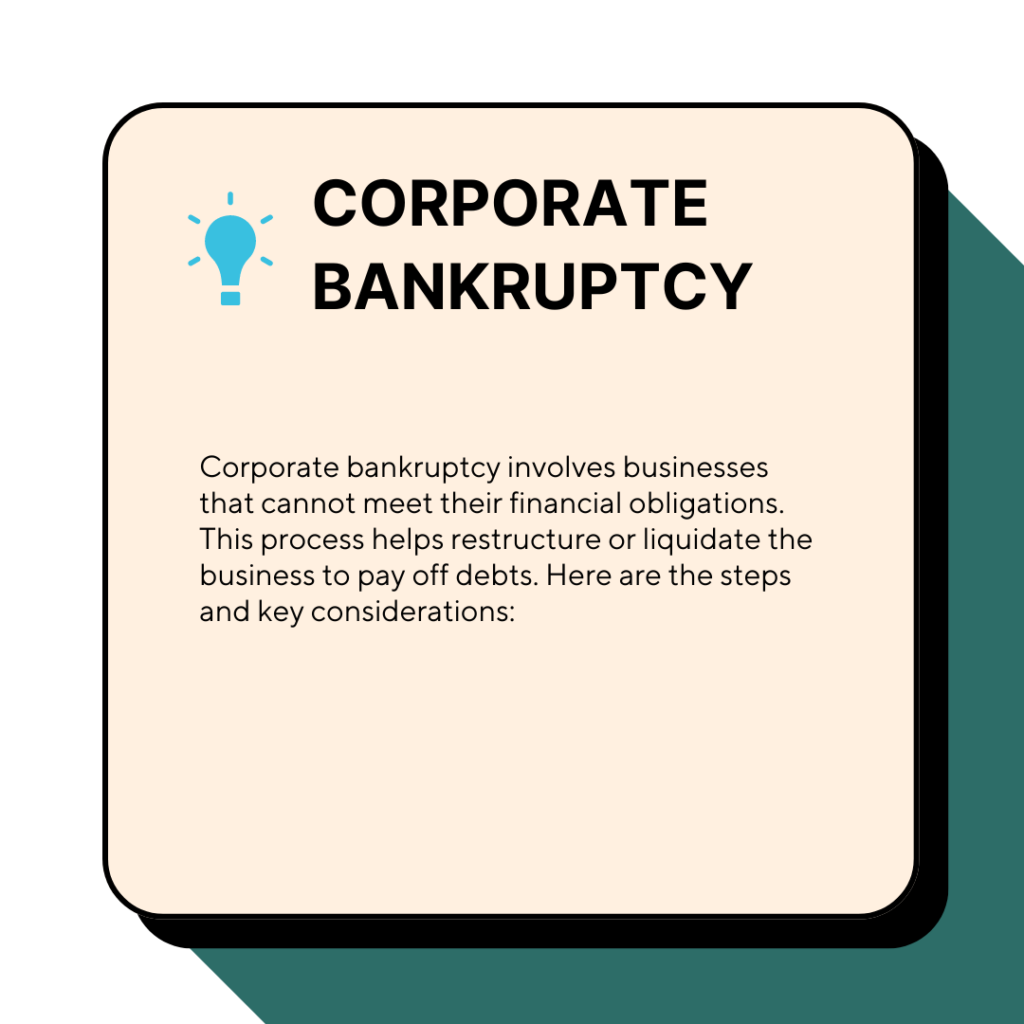Understanding Bankruptcy
Bankruptcy is a legal process that provides relief to individuals and businesses facing insurmountable debt. It offers a fresh start by allowing debtors to either eliminate or repay their debts under the protection of the court. This blog post will guide you through the basics of bankruptcy, including its types, the implications for your financial future, and the steps involved in filing for bankruptcy. Whether you’re an individual struggling with personal debt or a business owner facing financial difficulties, understanding bankruptcy can help you make informed decisions and explore viable options for recovery.
Peronsal Vs Corporate Bankruptcy


Procedures For Filing Bankruptcy
1. Assess Your Financial Situation:
- List all your assets, liabilities, income, and expenses.
- Determine whether bankruptcy is the best option or if there are alternative solutions like debt consolidation or negotiation with creditors.
2. Seek Professional Advice:
- Consult a licensed trustee in bankruptcy or an insolvency practitioner. They can provide guidance on the process and help you understand the implications of filing for bankruptcy.
3. Filing the Bankruptcy Application:
- Submit a bankruptcy petition to the court. For personal bankruptcy, you need to provide detailed financial information and a statement of affairs.
- For corporate bankruptcy, the company directors must file a resolution to declare the company insolvent.
4. Court Proceedings:
- The court will review the application and, if satisfied, will issue a bankruptcy order. This order legally declares the individual or company bankrupt.
5. Trustee Appointment:
- A trustee is appointed to manage the bankruptcy process. The trustee’s role is to oversee the liquidation of assets and distribute the proceeds to creditors.
6. Asset Liquidation:
- The trustee will liquidate non-exempt assets (assets that are not protected by law) to repay creditors. Exempt assets may include basic household items and tools of trade.
7. Distribution to Creditors:
- The trustee will distribute the proceeds from asset liquidation to the creditors in a specific order of priority.
8. Discharge from Bankruptcy:
- After complying with the terms of bankruptcy, the individual or business may receive a discharge, releasing them from the obligation to repay most of their debts. The discharge process and timeline vary depending on the circumstances and compliance with bankruptcy rules.
Bankruptcy Alternatives
1. Debt Consolidation:
- Combine multiple debts into a single loan with a lower interest rate. This simplifies repayment and may reduce your monthly payments.
2. Debt Settlement:
- Negotiate with creditors to settle your debts for less than the full amount owed. Creditors may agree to this if they believe it increases their chances of receiving some payment.
3. Financial Counseling:
- Seek advice from a financial counsellor to develop a debt repayment plan. They can help you manage your finances and avoid future insolvency.
4. Informal Arrangements:
- Contact creditors to discuss informal repayment arrangements. Creditors may be willing to extend payment deadlines or reduce interest rates.
By understanding the intricacies of personal and corporate bankruptcy in Trinidad and Tobago, individuals and businesses can make informed decisions about managing their financial difficulties. Whether you are an individual struggling with personal debt or a business facing insolvency, proper guidance and adherence to legal procedures can help navigate the challenging path of bankruptcy towards a fresh financial start.